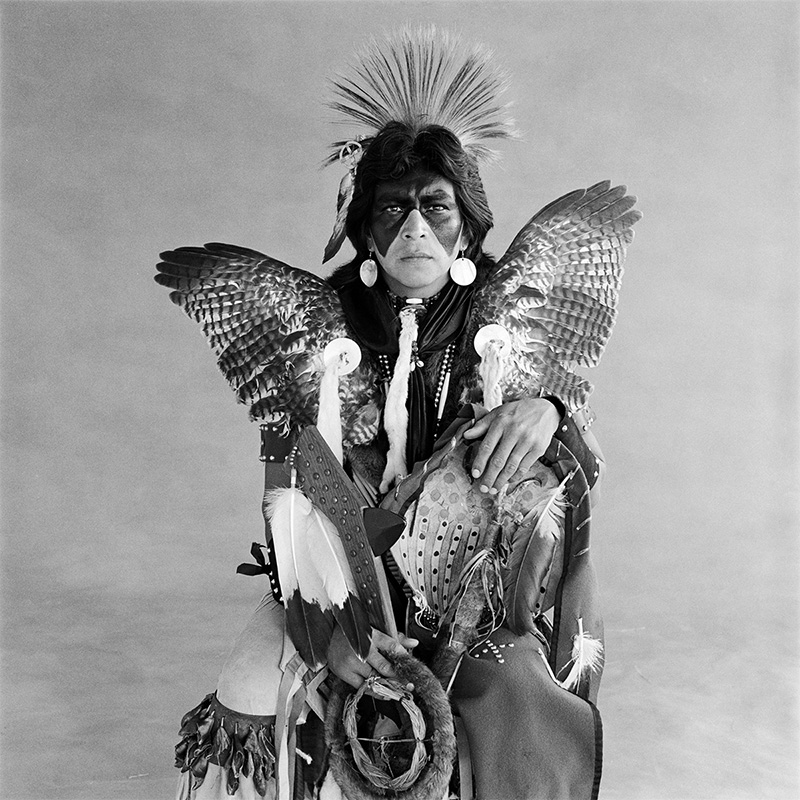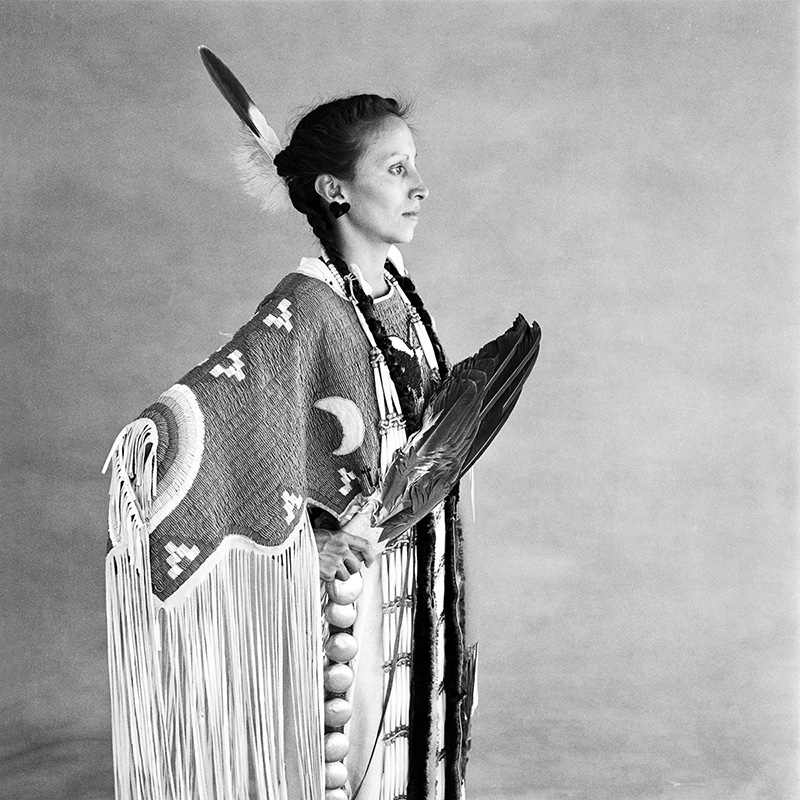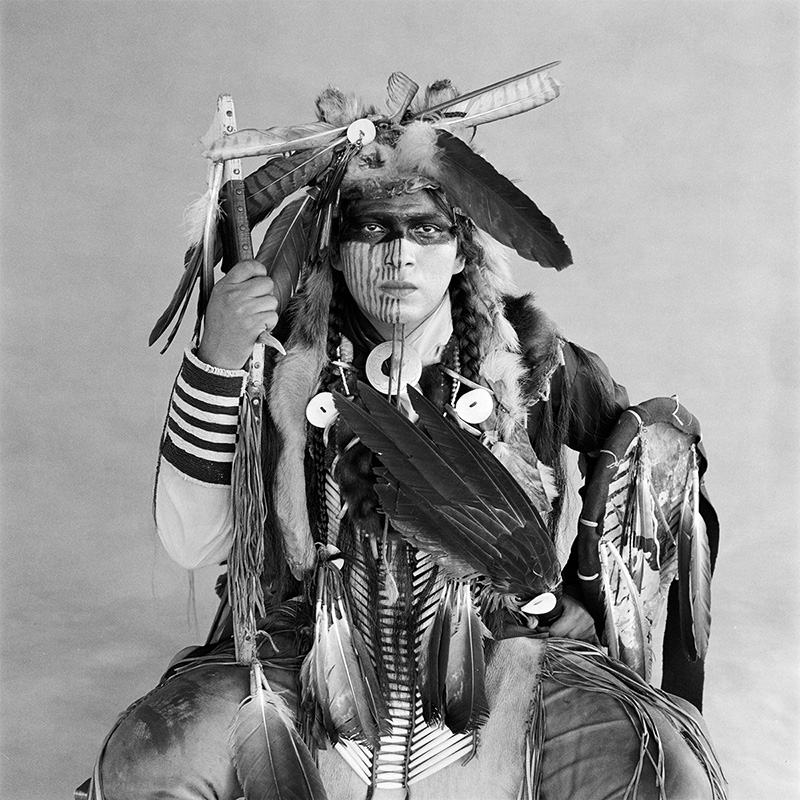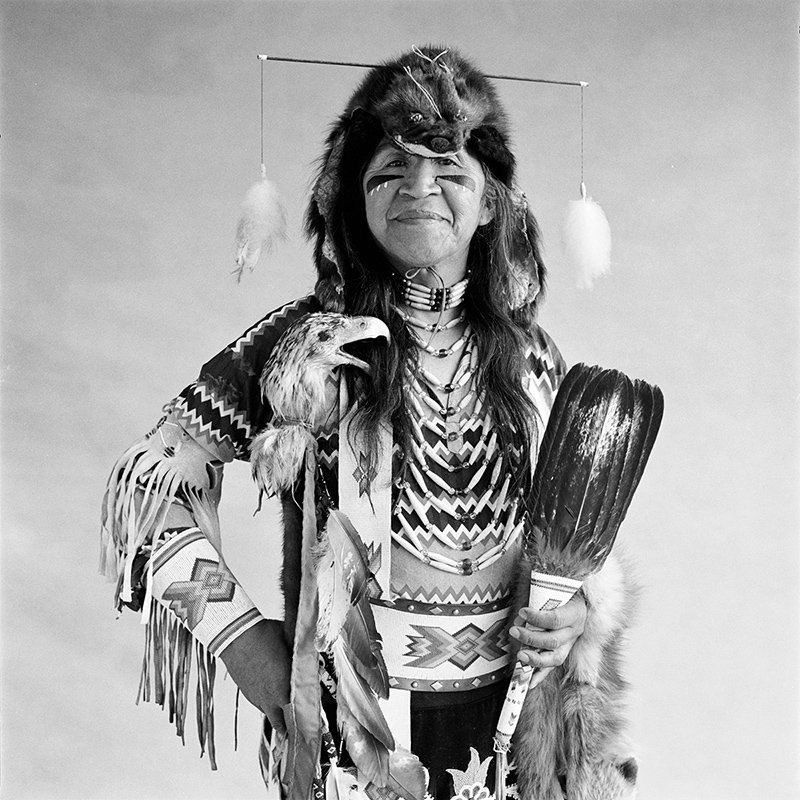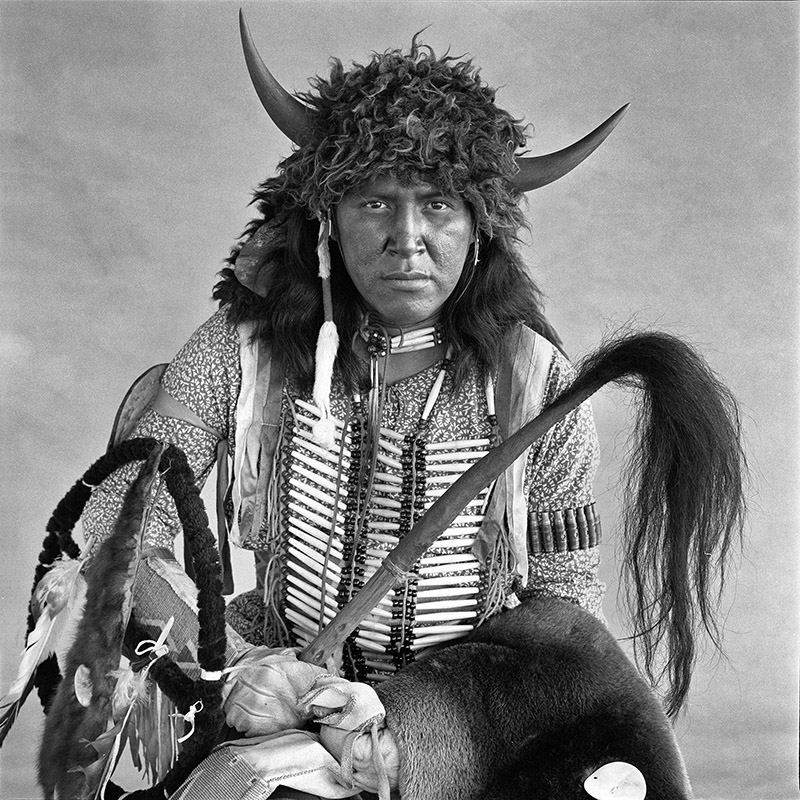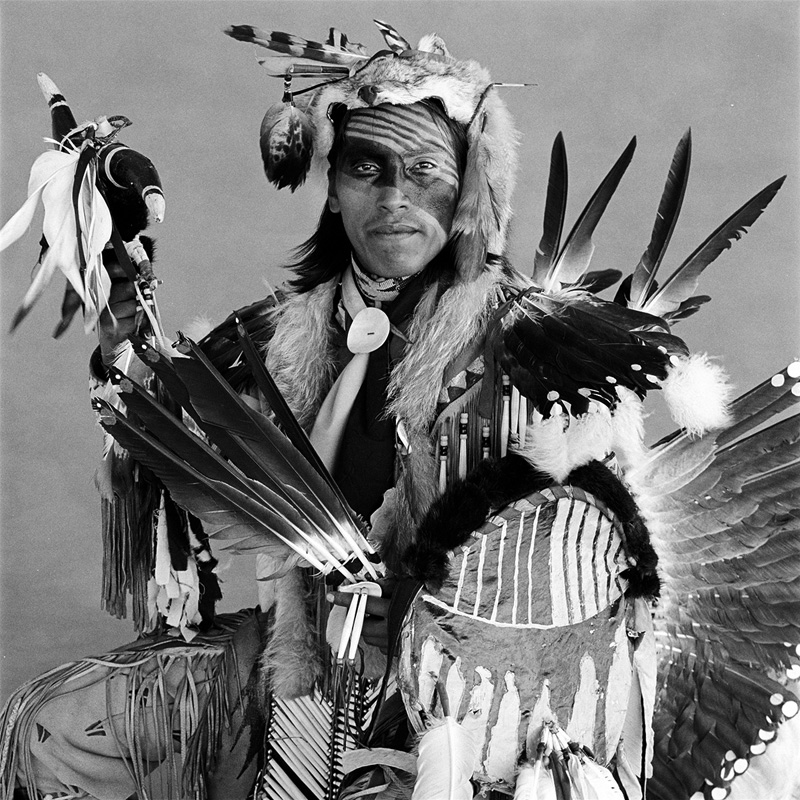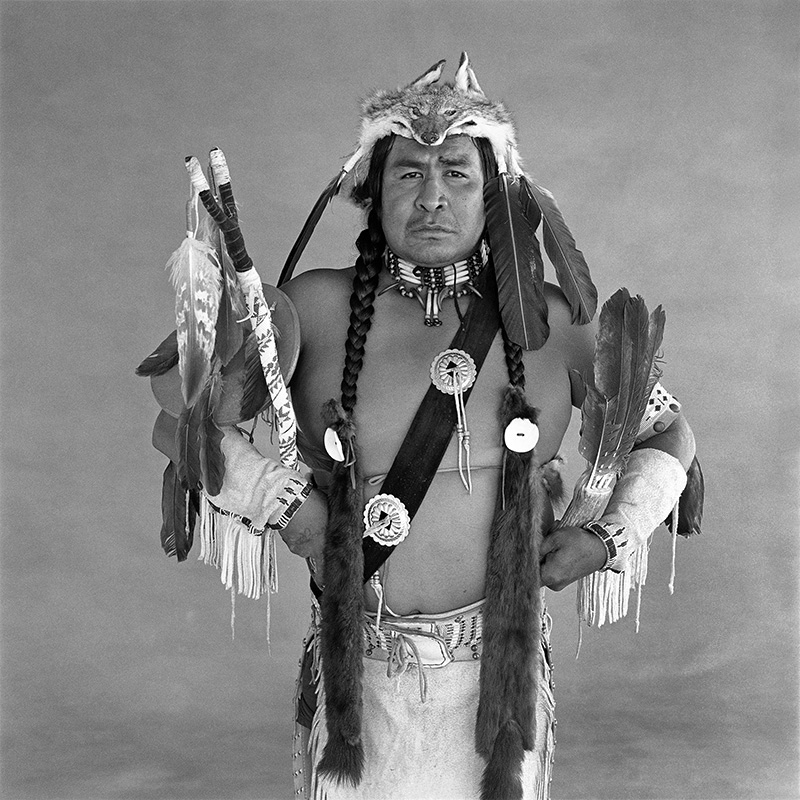I saw more than I can tell
While I stand there I saw more than I can tell,
and I understood more than I saw,
For I was seeing in a sacred manner the shapes
of all things in the spirit.
And the shape of all shapes as they must live
together like one being.
And I saw that the sacred loop of my people was
one of many loops that made one circle.
Chief Black Elk Oglala Sioux
The portraits of these North American Indigenous people were all taken in my tent with one side open to receive the luminous, gentle northern light. This allowed me to invite people to my tent and ask them to stand in front of a neutral backdrop, formalizing the situation. None of my guests needed any suggestions on how to stand or look. They were completely themselves and proud to be so. This made me aware of how outer form can become a vessel to contain inner life. When they wear their traditional dress, it becomes a spontaneous expression of their identity and pride, which in recent years has found new strength.
Christine Turnauer
North American Indigenous people travel thousands of miles from all over the continent to participate in the traditional dance competitions. They arrive in cars and trucks, wearing blue jeans and moving their bodies as most North Americans do. When they change from their everyday clothes into their traditional formal attire, they are transformed. As it has throughout history, their formal attire presents them with an opportunity for self-expression and an affirmation of their tradition, both of which still express memories of a way of life that has adapted and changed with the passage of time. The traditional clothes worn by the dancers are very much part of their culture and combine an aesthetic element with a multitude of symbols that belong to their spiritual order: the buffalo, the sacred eagle feather, power objects such as the medicine pipe, and the symbolic designs on their faces and shields which were inspired by visions and dreams.
Christine Turnauer

